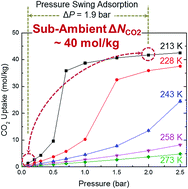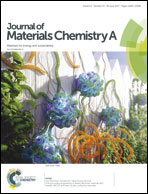Establishing upper bounds on CO2 swing capacity in sub-ambient pressure swing adsorption via molecular simulation of metal–organic frameworks†
Abstract
Swing capacity is a key performance metric for processes designed to capture CO2 by pressure swing adsorption (PSA). Sub-ambient operation of PSA units enables large changes in CO2 swing capacity, and can be economically viable when coupled with heat integration and power recovery. Here, we examine what upper bounds on CO2 swing capacity exist via molecular simulation of a large collection of metal–organic frameworks (MOFs). As has been observed previously for zeolites, the materials with the largest swing capacity at a given temperature have large pore volumes and heats of adsorption within a narrow range of optimal values. A number of materials are identified with swing capacities up to 40 mol kg−1 using a pressure swing from 0.1 bar to 2.0 bar.



 Please wait while we load your content...
Please wait while we load your content...